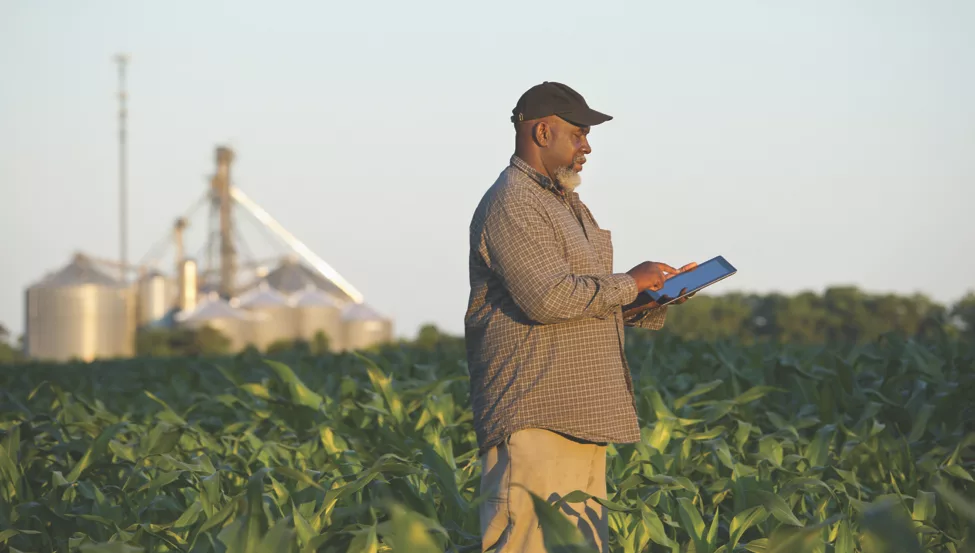At the end of every NFL game, win or lose, one thing is for certain: the coach is going to analyze the game film.
What did we do well? What (or who) performed poorly. The game film is their data that they then turn in to information for the next game plan. It turns out that a crop management plan may be more like coaching football than we realize.
“Just like a football coach analyzes game film: The farm data collected is a grower’s film,” says David Swain, precision farming manager with Southern States Cooperative. “It’s showing the grower and agronomist the game from last season: What did we do right? What did we do wrong? Now that we know these things, we can develop the farm management game plan for the next game (or season).”
Coaching the Crop
Swain further elaborates on the football analogy, noting that the first 10 offensive plays of an NFL game are always scripted, and after those 10 plays are run, coaches then start to make adjustments based on the conditions of the game. A farm management plan can use this same approach.
“The pre-emergence plan is our scripted set of plays and we stick with those decisions up to the emergence stage,” Swain says. “When the plant emergences, we start adjusting our game plan to the conditions.”
Growers can agree that there is a seemingly endless list of conditions that can affect a crop’s growth. Agronomists at Southern States, the 2017 Precision Farming Dealer Most Valuable Dealership, note that yields can be affected by roughly 70 or more variables.
But the key to improving yields while maximizing return on investment is to concentrate on the 3-5 most limiting factors.
“We want to take those 70 and break it down to 3-5 to focus on each season, rather than trying to fix everything at once,” says Swain.
This strategy aligns with an agricultural theory that dates back to the 1800s coined by biochemist Justin von Liebig. Known as “Liebig’s Law of the Minimum,” the theory states that crop yield is improved when you increase the amount of nutrients in the crop’s most limiting nutrient. Rather than focus on increasing or improving nutrients across the board, it is more beneficial to focus on the plant’s 3-5 most harmful deficiencies.
Home Field Advantage
Information farming allows a systematic approach to managing farms by zones of high, average or lower productivity. Management zones offer a solution by isolating different problem areas and mapping them out in a single field. By more precisely identifying high and low-yielding areas, management zoning helps farmers give the right attention to the right problems.
Once those categories have been set, growers and their agronomists can begin to diagnose what problems might be affecting yield in a particular zone — is it a soil test issue, is it a drainage issue, a pest issue or something else? Only after diagnosing the limiting factor can the problem be solved.
“The tests allow us to see exactly to what extent the areas are being limited in their production,” Swain says. “We can then take that information and develop a plan for the growers to increase their yield by decreasing the limiting factors.”
Cutting the Weakest Players
In each step of the process, from preparation for planting and fertilizer application to crop emergence, growth, reproduction and harvest, information collected empowers farmers to systematically discover yield-limiting conditions so that they take action to correct them.
Yield variations, in a sense, provide a report card on the effective use of soils, nutrients, precipitation, seed and other management practices. In addition, by benchmarking inputs and production data with yield records over the years, growers can compare results to improve performance the following season.
Hiring a Good Coaching Staff
The programs that Swain’s team at Southern States use are designed to that help growers analyze their field data, help them understand what that data means, and then help the grower develop a game plan to maximize yield and discover untapped yield potential.
Southern States launched a unique three-tier precision ag program last year that aims to simplify the complex offerings of precision ag programs, breaking them down into basic, intermediate and advanced-level precision ag needs.
“Too often in the industry we see information overload with precision ag offerings to growers who are just learning about agronomy technology,” said Swain. “Our tiered approach allows us to offer specific packages depending on a grower’s level of precision ag knowledge and needs, without overwhelming them by throwing the entire technology program at them at once.”
Their programs provide in-season site visits by trained crop advisors, a specific number of satellite images, and a post season evaluation — or “report card” — of the year’s production cycle. In addition, their advanced level Analysis Program allows benchmarking of a season’s records to compare year-over-year progress, a handy tool for improving next season’s performance.
You Are the Head Coach
Farm data collected from soil samples, fertilizer application and planter logs, over-flight imagery by aircraft, satellite, or camera-equipped drones, along with yield monitors on harvesters, can all be useful. But by itself it is just “data” until a grower understand what it all means and what the next steps are in increasing their yields.
“Data is not going to be very useful until it’s interpreted and turned into a game plan,” Swain reiterates.
Information attained from your farm’s data will allow you to form a solid game plan and better “coach your crop.”
For more information on Southern States precision ag programs, visit southernstates.com/precision.



![[Technology Corner] A Big Step Forward for Interoperability & Data Sharing](https://www.precisionfarmingdealer.com/ext/resources/2025/12/12/A-Big-Step-Forward-for-Interoperability--Data-Sharing.webp?height=290&t=1765565632&width=400)


